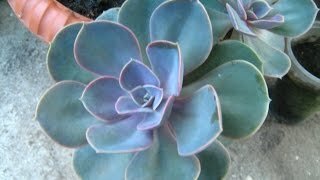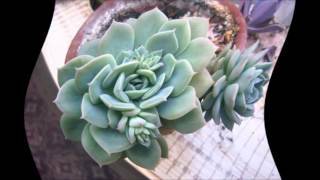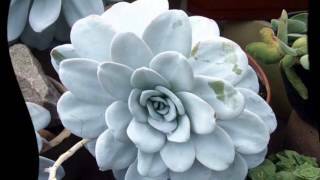Echeveria is a succulent plant of the Tolstyan family. It grows in the USA, Mexico and Peru. The leaves are very dense, spiral, forming a kind of rosette. They are entire and relatively fleshy. Can be flat or rounded. The color is green, but a reddish coating can be observed at the edges of the leaf blade.
Different echeveria pitchforks have their own protective cover: if some have a grayish-white wax coating, then others have pubescence. Thus, the plant is protected from direct sunlight. This representative of the world of flora is grown without any problems. Depending on the species, it can reach 10 to 40 cm in height and diameter. Every year echeveria forms new leaves and small rosettes. The plant belongs to the perennial.
Caring for echoes.
Echeveria: temperature.
In summer, the plant is suitable and room, not above 27 degrees, but in winter it will be better for the plant at + 7-15.Echeveria normally transfers a short-term drop in temperature, if the indicator does not fall below +5.But the leaves are sensitive to frosty air.
Echeveria: air humidity.
Moisture should be low and there is no need to spray the plant. But periodically you can wipe the leaves of non-ejaculated species with a damp rag so as to prevent pest damage.
Echeveria: lighting.
This representative of the flora needs a bright sun. In winter, place the pot on the windows that face south or south-east. But in the summer will not hurt inessential shade. EASERIA: soil.
You can buy ready-made primer for succulents, half of which consists of sand. And if you want to prepare a mixture for echeveria yourself, then in addition to sand, you still need equal proportions of leaf and sod land. Suitable and such a composition: one part of peat and loamy soil and two parts of coarse sand. At the base of the plant does not interfere with an additional layer of sand. This is necessary to improve drainage. In addition, so echeveria looks more attractive. Drainage should take up a third of the pot volume.
Echeveria: watering.
In the summer between watering, the top layer of the soil should be well dried to a depth of 2.5 to 5 cm. In time, drain excess water out of the drip tray, because the plant can rot if the liquid gathers at the base of the leaves or in the outlet. In the period from May to September, echeveries need only be watered once a week. Until mid-November, watering should be done only once a month, and in winter the plant should be watered only once or twice for the entire season.
Eheveria: fertilizing with fertilizers.
Eheveria is fed from early spring, once a month. This requires liquid fertilizer for succulents( half dose).Due to the overabundance of nutrients, tender root systems may suffer.
Echeveria: transplant.
In general, a young plant needs to be transplanted annually and it should be done in the spring. If the echeveria is already adult, then just change the top layer of the soil.
Echeveria: problems of cultivation.
Carefully handle the plant, because its leaves are too fragile and with one careless movement a couple of them you can break. If irrigation is excessive, the base of the socket will rot. As for the diseases, they are not frequent companions of echeveria. Although there may be a mealy bug, spider mite, aphid. But this plant is quite resistant to a variety of pests. The presence of fungal disease is indicated by the appearance of brown and yellow spots on the leaves. And if the leaves began to soften, rot from the middle and turn yellow, it means that moisture has stagnated in the socket and the plant should be dried immediately.
Related Videos:
 10:03
10:03  1:07
1:07  1:14
1:14 